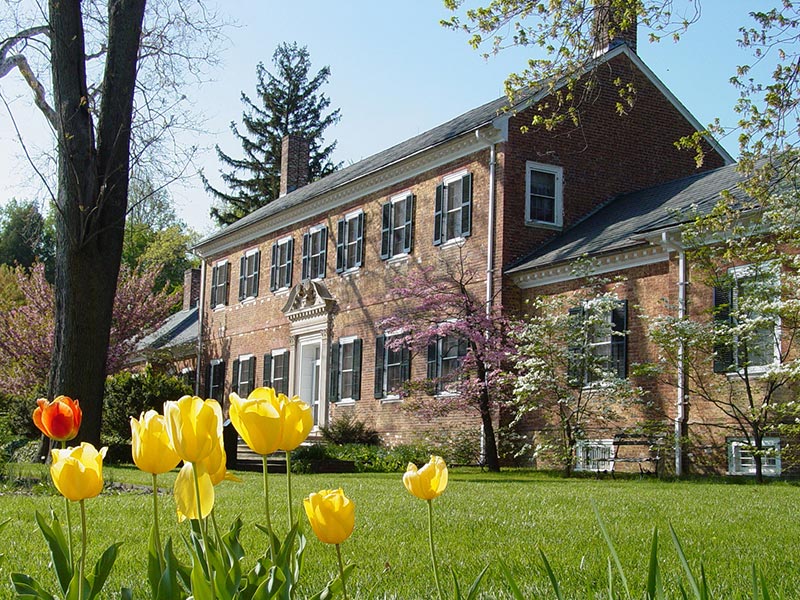Chatham Manor is one of America’s most beautiful and historic houses. Built in the 18th century by William Fitzhugh, the house served as a headquarters and hospital for the Union army during the Battle of Fredericksburg. Ransacked during the Civil War, the house was restored in the 20th century and remained a private residence until 1975, when it was given to the National Park Service. Films and displays inside the house describe its history. One of its owners, the Lacy Family, also owned Ellwood, which served as a Union headquarters during the Battle of the Wilderness.
Many notable people have visited Chatham in its 200-year history, including George Washington, Thomas Jefferson, Robert E. Lee, Abraham Lincoln, Clara Barton, Walt Whitman, Washington Irving, and George Marshall. The house has a lovely formal garden and its location on the bluffs overlooking the Rappahannock River offers an outstanding view of the City of Fredericksburg.
Visitors are also free to wander on the grounds, in the gardens, and among the outbuildings at their leisure. The interiors of the outbuildings are not open to the public, so please view these structures from the outside only.
The National Park Service began the restoration of the 1920’s colonial revival east garden in 1984. The walls, statues, and Ionic columns, represent this period. At the front of the building, the original entrance road winds its way down the bluff to the river. The front terraces offer a panoramic view of Fredericksburg landmarks on the city skyline, and a model pontoon bridge section recalls the nearby Upper Pontoon Crossing, where Union engineers erected their pontoon bridges during the Battle of Fredericksburg.
On the river side of the house, the outline from the two-story Greek revival porch, which graced the front entrance for nearly 100 years, is still visible. The present limestone entrances were added in the 1920’s.
If you walk the grounds at Chatham you will see that several ornamental cast concrete pineapples adorn the landscape. This colonial decoration served as a symbol of hospitality, a tradition which the National Park Service strives to continue.


